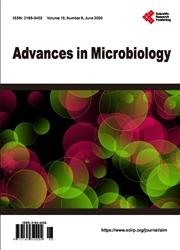Luminometric Studies of Yeast Response to Complex Environmental Calcium Variations Demonstrate Sensing of External Calcium Ion Changes
引用次数: 0
Abstract
The response of yeast to sharp environmental increases in calcium concentration has been extensively studied. However, systematic studies of the response under more general changes are still lacking. Only limited exploration of cellular responses has been conducted where calcium concentration is decreased. This article describes a set of luminometric experiments that monitor the cytosolic calcium concentration under changing external concentration conditions. As a decrease in external calcium concentrations requires the use of large sample volumes, the experiments require the use of equipment adapted for this purpose. We describe the modification of commercial luminometric equipment to make the exploration possible. We explore the yeast cellular behavior when an increase in external calcium concentration is followed by a decrease in external calcium concentration. We compare these results with those from the case of a double pulse of concentration increase. Results from the experiment show that the first, concentration increasing pulse produces the well-known sharp increase in cytosolic calcium followed by calcium sequestration to return to a cytosolic concentration near its initial condition. Surprisingly, the calcium decrease step shows similar results with a cytosolic increase followed by a return to lower levels. The results suggest the presence of a calcium sensing mechanism regulating calcium influx from external sources. This mechanism would produce channel opening as a response to any changes in external concentration, be it an enhancement or a depletion.酵母对复杂环境钙变化的响应的光度研究证明了对外部钙离子变化的感知
酵母对环境中钙浓度急剧增加的反应已被广泛研究。然而,对更普遍的变化下的反应的系统研究仍然缺乏。只有有限的探索细胞反应进行了钙浓度降低。本文介绍了一组在变化的外部浓度条件下监测胞质钙浓度的光度实验。由于降低外部钙浓度需要使用大样本量,因此实验需要使用适合此目的的设备。我们描述了商用光度测量设备的改进,使勘探成为可能。我们探索酵母细胞行为时,增加的外部钙浓度是随后减少外部钙浓度。我们将这些结果与双脉冲浓度增加的情况进行了比较。实验结果表明,第一个浓度增加脉冲产生众所周知的细胞质钙的急剧增加,然后钙被固存,使细胞质浓度恢复到接近初始条件的水平。令人惊讶的是,钙减少的步骤显示了类似的结果,细胞质增加,然后返回到较低的水平。结果表明存在钙感知机制调节钙从外部来源流入。这种机制将产生通道打开,作为对外部浓度的任何变化的反应,无论是增加还是减少。
本文章由计算机程序翻译,如有差异,请以英文原文为准。
求助全文
约1分钟内获得全文
求助全文

 求助内容:
求助内容: 应助结果提醒方式:
应助结果提醒方式:


